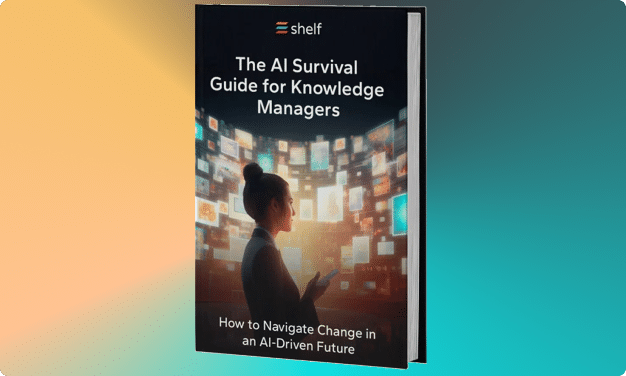As customer expectations have risen, so have the challenges of meeting them. In the last ten years, the sheer volume of electronic data has increased by ten-fold, and continues to increase unabated. Meanwhile, more complex, rapidly evolving online services make for more complex, rapidly evolving customer questions. Customers may expect immediate answers, but they also expect accurate answers. Service agents routinely have to search through mountains of data across multiple systems under intense time pressure to address a single customer inquiry.
Higher customer expectations. More data. More apps. More work. And failure is not an option. Customer service leaders need new solutions to address these new challenges–solutions that provide order of magnitude increases in productivity to counter the order of magnitude increases in volume, complexity and expectations–without sacrificing quality. They need tools that can cut through the noise to find the perfect answer to a specific customer question in seconds.
Some Answers Matter More Than Others
When customers get wrong answers, they get angry and they switch to competitors. Therefore, knowledge failure in customer service carries a uniquely high risk in comparison to other areas of the business. Employee questions such as “What are the top five benefits of our product?” and “How do I apply for a parking pass?” just don’t carry the same urgency and risk as customer questions like “How do I make this work as advertised?” and “Why is my order late?”
While businesses face intense pressure to provide on-demand service to customers, they must still meet a very high bar for quality. It simply isn’t possible to crowdsource information and hope for the best ala Wikipedia, because you must be sure the answer is correct. And if it isn’t correct, you need to fix it—fast. Unfortunately, quality control is the Achilles heel of legacy knowledge management systems. As soon as new content is published, it starts to age and gets lost beneath the next pile of new content.
Legacy Knowledge Management Can’t Keep Up
There are many reasons why a customer doesn’t get a satisfactory response to an inquiry. Maybe she can’t find the answer. Maybe the answer she finds doesn’t address the question. Maybe the answer is out-of-date. Maybe the answer doesn’t exist at all. Legacy knowledge management platforms, such as SharePoint, do a great job storing and retrieving information, but they do a terrible job understanding and improving knowledge. What questions are customers asking? Which questions are missing answers? What answers are simply wrong? In most organizations, learning and improvement are time-consuming, manual processes that fall squarely on the shoulders of knowledge managers.
The difference between knowledge and information is curation. And all new knowledge has an expiration date. The minute it is published, quality begins to erode. Modern knowledge automation should support the full knowledge lifecycle. It should provide answers to today’s questions, but it should also help knowledge managers learn the gaps between questions and answers, and continuously improve knowledge to close the gaps.
Modern Knowledge Automation Must Shift
From tactical document publishing to strategic management of the full knowledge lifecycle, answering questions on-demand, learning the gaps between questions and answers, and continuously improving knowledge to close the gaps. While the productivity of knowledge managers may appear to have little business impact–after all, knowledge managers make up a small portion of the overall workforce–poor knowledge manager productivity gets multiplied many times over into poor knowledge worker productivity. As Peter Drucker himself has argued, the productivity of knowledge workers is the singular most important management challenge of the 21st century. Knowledge managers drive real productivity gains by improving the quality of knowledge, as every other data source organically expands its quantity. Quantity without quality is just garbage in, garbage out.
To Keep Up With Our On-Demand World
Customer service leaders must look to knowledge managers as strategic enablers of the business, not just librarians for processes and policies. Modern knowledge automation must also shift to support this change. Technical requirements for document publishing, storage and retrieval must be recast as business capabilities that enable customer service organizations to answer questions on-demand, learn the gaps between questions and answers, and continuously improve knowledge quality to close the gaps.

The Future of Knowledge is Now
For the last twenty years, technology innovation has created as many problems as solutions for knowledge management. While big data and big clouds have scaled our ability to generate and deliver information, they have consistently undermined our ability to curate it. However, dramatic recent advances in artificial intelligence (AI) and integration standards (APIs) are breaking down the two biggest impediments to knowledge quality: data volume and system complexity. Today’s businesses have a unique window of opportunity to make quantum leaps in knowledge accuracy as well as knowledge accessibility, but there will be winners and losers.
The First Law of Holes states that if you find yourself in a hole, stop digging. The Second Law of Holes states: you’re still in a hole. When you examine your customer service infrastructure, how many knowledge silos have you dug? Every knowledge silo increases your technical debt and decreases your knowledge ROI. It is imperative to stop digging silos now and invest in modern knowledge infrastructure.
Three Mandates of Modern Knowledge Management
We are at the beginning of a revolution in knowledge management for customer service. After decades of exploding data and expanding clouds, API standards and AI innovation provide the foundation to scale both knowledge accessibility and accuracy. Knowledge management infrastructure is evolving from tactical storage and retrieval into full knowledge lifecycle automation. Businesses that move quickly have a unique window of opportunity, but where and how should you start? Here are three modern knowledge management mandates for customer service to start you on your journey.
Modern knowledge automation should improve knowledge quality, not undermine it. Use modern API integration to eliminate knowledge silos. Curate knowledge centrally for the highest level of quality, then distribute it broadly in a wide variety of formats to meet the needs of specific applications.
Every Question is a Learning Opportunity
As strategic drivers of business productivity, knowledge managers must monitor the impact of their content on customer service. Unanswered questions, undocumented answers given by agents, heavily used content, unused content, and direct feedback on content quality from customers and agents can all be analyzed to provide a detailed understanding of how well your current knowledge meets the needs of your customers.
The implicit knowledge hidden in real customer questions and answers is more powerful than the explicit knowledge in your knowledge base. Plus, it’s real. It’s measurable. You can put an FAQ into your knowledge base, but you can’t ask your knowledge base if that FAQ makes customers happy. You can’t ask your knowledge base which agents are filling the gaps in your FAQ with sticky notes. Modern knowledge solutions should capture real-world data through integration and mine it with AI to uncover the hidden gems buried within everyday customer conversations.

Continuously Improve Answers with Artificial Intelligence
In a landscape where immediate and accurate customer service is imperative, it is essential we transform knowledge management through modern automation. Leveraging AI and APIs can amplify the quality and accessibility of knowledge, turning every customer question into an opportunity for growth and improved service delivery.




